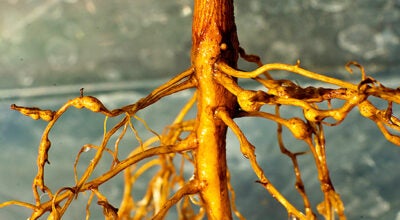MOORE OUTDOORS: Unique life, local history of whale sharks
Published 11:52 pm Wednesday, August 2, 2017
Last week was Shark Week!
The most anticipated week of wildlife programming had plenty great whites, bull sharks and other potentially dangerous creatures.
Now that the dust has settled, I want to talk about something different-the gentle giant of the Gulf of Mexico and other warm seas-the whale shark.
Here are five facts you probably did not about about these under appreciated beauties:
• Fact No. 1: Whale sharks are filter feeders and a big part of what they eat are fish eggs. As spawning approaches on reefs and other fish-rich areas they have been documented waiting for the eggs to appear and then moving into gorge themselves.
• Fact No. 2: Whale sharks hatch their own eggs inside their bodies. The mother will hatch out about 300 babies but very few make it to maturity. And even when they do it takes upwards of 25 years to be able to reproduce. That is why the death of a whale shark can have a big impact on the species.
• Fact No. 3: Speaking of making babies, no one has ever observed whale sharks mating. Well, at least no one in the scientific community has. They spend a huge portion of their lives on the open sea where few eyes gaze upon them.
• Fact No. 4: The Georgia Aquarium in Atlanta is the only facility with an opportunity to swim with captive whale sharks. They have four and a portion of what they make on the encounters goes to field conservation.
Me and my wife Lisa got to swim with the whale sharks there two weeks ago and it was a truly amazing encounter. There is no way to explain the awe we experienced as the beautiful creatures swam below and next to us.
Since 2004, the Aquarium’s field research focused on the many whale sharks that visit the Yucatan peninsula in Mexico, the largest gathering of its kind in the world.
“By using satellite tags, aerial surveys and photo identification software, Georgia Aquarium and its partners have studied and tracked over 1,000 whale sharks known to visit this area to feed on plankton and fish eggs every summer. The future focus for field research will be to explore connections to populations of whale sharks found in more remote places on Earth.”
• Fact No. 5: Whale sharks sometimes beach themselves or enter shallow bays when sick. When I was 8 years old, a medium-sized whale shark entered Sabine Lake, a bay on the Texas/Louisiana border near my home.
This is from United Press International in a story dated July 10, 1982.
“A rotund 26-foot whale shark nicknamed ‘Gums’ died an unusual death in an oyster bed in Sabine Lake, a biology professor says.
“Dave Bechler, Lamar University assistant biology professor, said Friday the shark was a rare find along the Texas coast because it does not normally inhabit Texas coastal waters.
‘There was probably something already wrong with it,’ he said. ‘Whales and whale sharks sometimes beach themselves. We really don’t know why they do that.’”
Whale sharks are incredible creatures that deserve our adoration. They are certainly not frightening and get far fewer headlines than their carnivorous cousins. They are however the largest shark (and fish) in the ocean. That should count for something.
•
To contact Chester Moore, email him at chester@kingdomzoo.com. You can hear him on “Moore Outdoors” Fridays from 6-7 p.m. on Newstalk AM 560 KLVI or online at www.klvi.com.





